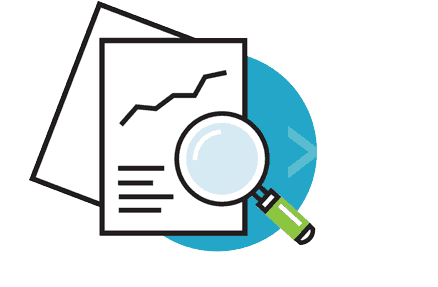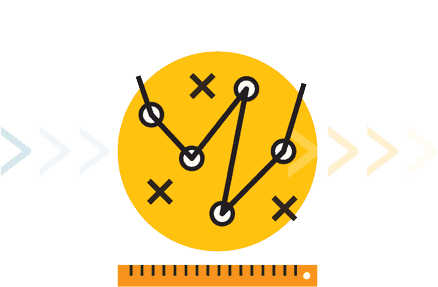The MBT Framework is a systematic, repeatable and holistic framework to enable organisations to tackle the challenges of innovatively transforming themselves – continuously, consistently and predictably.
The Framework is divided into three phases along the value-chain of Change. There are “connect” points between each phase, which are usually points of “tension” in the value-chain of MBT. We call these three points, ‘Discourses’.
High-level activities are recommended at each phase of the Framework. Each of these activities also has capabilities categorised into component types, further allowing you to plot your maturity journey.
The MBT Framework allows you to understand your organisation’s maturity, by plotting its current and future position along its journey of Change Resilience.
Why have the MBT Framework
In a climate of constant change, innovation and technology advancements, organisations struggle to keep pace and transform themselves fast enough to meet internal or external pressures.
The MBT Framework has been developed by a diverse group of industry experts based on more than a decade of collective knowledge and practical experience. The MBT Framework aims to tackle issues of consistency in innovation, transformation and change.
The Framework consists of three fundamental pillars that are intrinsically connected:
MBT Framework - Three Pillars
Uplift Capability
Uplift Capability identifies and addresses aspects of business operations that must be optimised to support innovative change.
Enhance Systems
Enhance Systems outlines an agile and innovation-centric approach to improving internal system capability.
Embed Innovation
Embed Innovation establishes and champions innovation processes for organisations to extract maximum value from ‘good ideas’.
While Embed Innovation is the core of the Framework, and represents innovation itself, it is strongly influenced by how quickly and cohesively the outer pillars function, and reflects the systematic nature of a cyclone.
A cyclone is a highly structured and interdependent system that releases enormous energy when all the parts are working together. In the same way that a cyclone draws power from the outside, the MBT Framework relies on the effectiveness and efficiency of the outer pillars to extract the most value from innovation and incremental improvement.
The building blocks within
Strategy
-
Transformation Plan
-
Strategy and Process Capability Linkage
-
Business Architecture
-
Innovation Plan
-
Stakeholder engagement
-
Process
-
Process Management Decision Making
-
Process Roles and Responsibilities
-
Process Metrics and Performance Linkage
-
Process Management Standards
-
Process Management Controls
-
Methods
-
Improvement Design and Execution
-
Transformation Design and Execution
-
Innovation Design and Execution
-
Governance, Control and Measurement
-
Project and Program Management
-
Technology
-
System Design and Modelling
-
Tool Implementation and Execution
-
System and Tool Control and Measurement
-
Technology Transformation
-
Project and Program Implementation
-
People
-
Skills and Expertise
-
Knowledge Management
-
Education and Learning
-
Collaboration and Communication
-
Accountability
-
Culture
-
Responsiveness and Change
-
Values and Beliefs
-
Attitudes and Behaviours
-
Leadership Attention to Transformation and Innovation
-
Centre of Excellence (CoE) and Social Network
-
Distributed across the entire Change Value-Chain of MBT are capability “markers” that we’ve categorised into components. This allows for a systematic and predictable way to map and tailor an adoption program for the use of an “MBT maturity journey” within an organisation. Capabilities may have multiple layers and can be applied to various phases depending on the need and the maturity level of the organisation.
Adopting an MBT Journey
Assess > Plot > Advance
The three-step “journeying” exercise is a simple method to starting your MBT journey.

Assess
Using the MBT Readiness Assessment tool, you can quickly plot how “Change Resilient” your organisation is currently.

Plot
Develop an adoption path through implementing or improving the capabilities within the component columns of the framework. Plot only what is right for your organisation.

Advance
Gain endorsement for your adoption path and go for it!
How is the MBT Framework different? Who is it for?
By adopting a holistic approach, MBT addresses the inherent conflicts between innovation and day-to-day operations, and identifies what is required to ensure innovation becomes a core and continuous part of the organisation’s DNA.
Continuous transformation and innovation is a maturity journey. As such, the MBT Framework is useful for organisations established in the pre-digital age:
- Rapid advances in technology, as well as societal and economic shifts, are placing increasing pressure to change and evolve quickly.
- These businesses are experiencing pressure from emerging competitors who have established themselves with nimble structures and modern technologies and can therefore take advantage of emerging markets and a millennial customer base.
- Business leaders within these organisations can often recognise the need for change and innovation but are trapped between these external pressures and internal inhibitors such as outdated systems, monolithic processes and organisational silos.
- MBT provides a welcome solution to these businesses by offering a practical and comprehensive Framework that lifts an organisation’s innovation practices and organisational agility.
Find out here - are you Change Ready?

